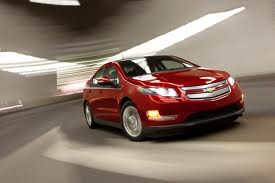Chevrolet Volt (2012): Full Review – Part 2
Wednesday, June 20th, 2012 3:30:47 by Usman Khalid
Let’s take a stab at it. Normally, a green car is divided into two genres, properly battery-studded electric vehicle (EV) like the Tesla that needs to be plugged in to charge the power source, and the other is a hybrid that uses batteries as primary source and when they run out of juice, a gasoline-engine inside the hood kicks in to supply the power to the wheels.
However, the electric version of the vehicles has evolved into a hybrid of its own self. The likes of Volt and Fisker Karma use a gas-engine to charge or trickle charge the car batteries when they are depleted.
Under the hood of the Volt lies a 1.4-litre gasoline engine that starts revving when the batteries are out. They however, do not run the wheels directly but instead trickle charge the batteries to supply the electricity to the motor. This way, only source of horsepower is the electric motor up front.
The 16kWh provides around 35 miles to the single charge but that entirely depends on the driver’s style of handling it; it may extend to 50 miles. However, when the gasoline engine protrudes the power affairs, things start to shape up. The hybrid power train churns out 380 miles to full 9.3 gallon tank.
This is efficient but in gas terms, the car has an average of 94 miles per gallon equivalent but surprisingly the gas hybrid reduces the mileage to 37 mpge, mainly because of the gas consumption.
The main conundrum in the whole EV thing is the charging points. The EV charge outlets are not sparsely available everywhere so one either has to install a plug-in mechanism at home or at the office or has to find a place somewhere in between that is both convenient and accessible.
Tags: chevrolet, chevy, electric vehicle, ev, voltShort URL: https://www.newspakistan.pk/?p=26426

















